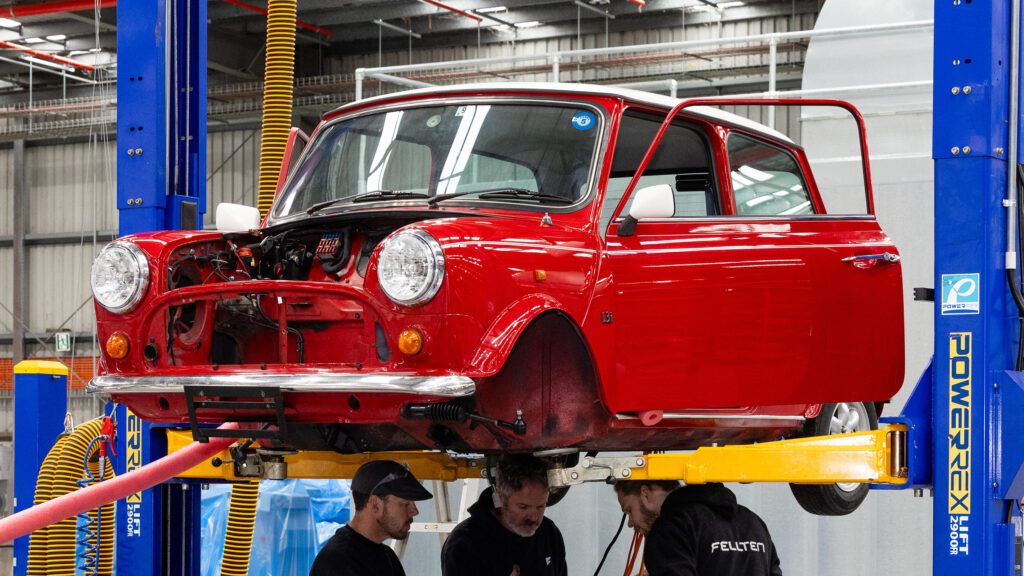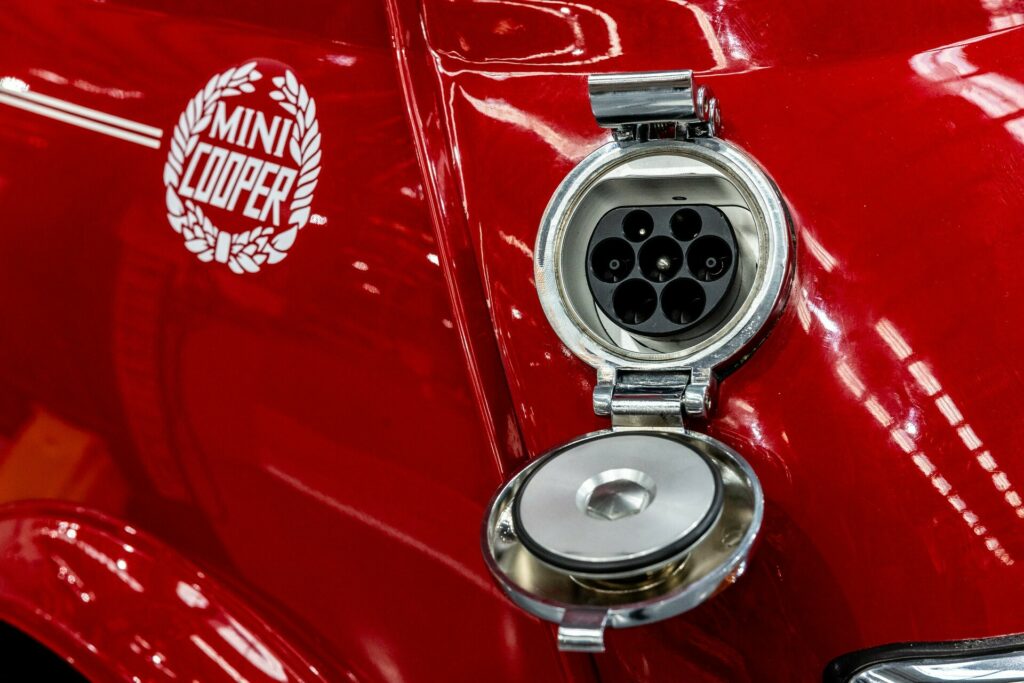Driving this classic Mini is a compact 19 kWh battery pack powering a 100 hp electric motor
August 24, 2023 at 13:33
 –>
–> 
–>
Many would argue that if a car like a classic Mini is to be modified, it should be done so in a way that respects its history as a tiny, combustion-powered hatchback that’s all about driving pleasure. However, there is a burgeoning scene of all-electric conversions for the classic Mini and one example in Australia has just undergone such a transformation.
This Mini was overhauled by Mini Australia working in partnership with Fellten Australia. The 1995 Mini first had its original engine and transmission removed before Fellten installed a new BMH front subframe. An electric powertrain was then slotted in and impressively, the completed car weighs the same as it did before the EV conversion and it even retains the same weight distribution.
Watch: How Could You Not Want A Classic Mini That’s Honda Powered?
advertisement scroll to continue
How is this possible? For starters, it only features a small 19 kWh battery pack driving a small single electric motor with 72 kW (100 hp) and 175 Nm (129 lb-ft) of torque. The converted Mini can travel up to 175 km (110 miles) on a single charge and accelerate to 100 km/h (62 mph) in a respectable 8 seconds. It features a 6.6 kW onboard charger and a Type 2 charging port.

Fellten Australia has also incorporated a regenerative braking system into the electric powertrain that offers City and Sport modes. There is also a fly-by-wire throttle, a PTC cabin heater, and a liquid cooling system. Impressively, all of the parts made for the car can bolt in and do not require chassis alterations.
“Never has the topic of electromobility been so relevant, particularly in Australia where EV adoption rates are still in its infancy and there is an opportunity to shape the mindset toward considering sustainable transport,” Fellten chief product officer Dave Budge commented. “We are excited to be working with MINI Australia on converting this classic collectible which takes something we all know and love and transforming it into a catalyst for conversations surrounding sustainable mobility solutions.”
 –>
–>